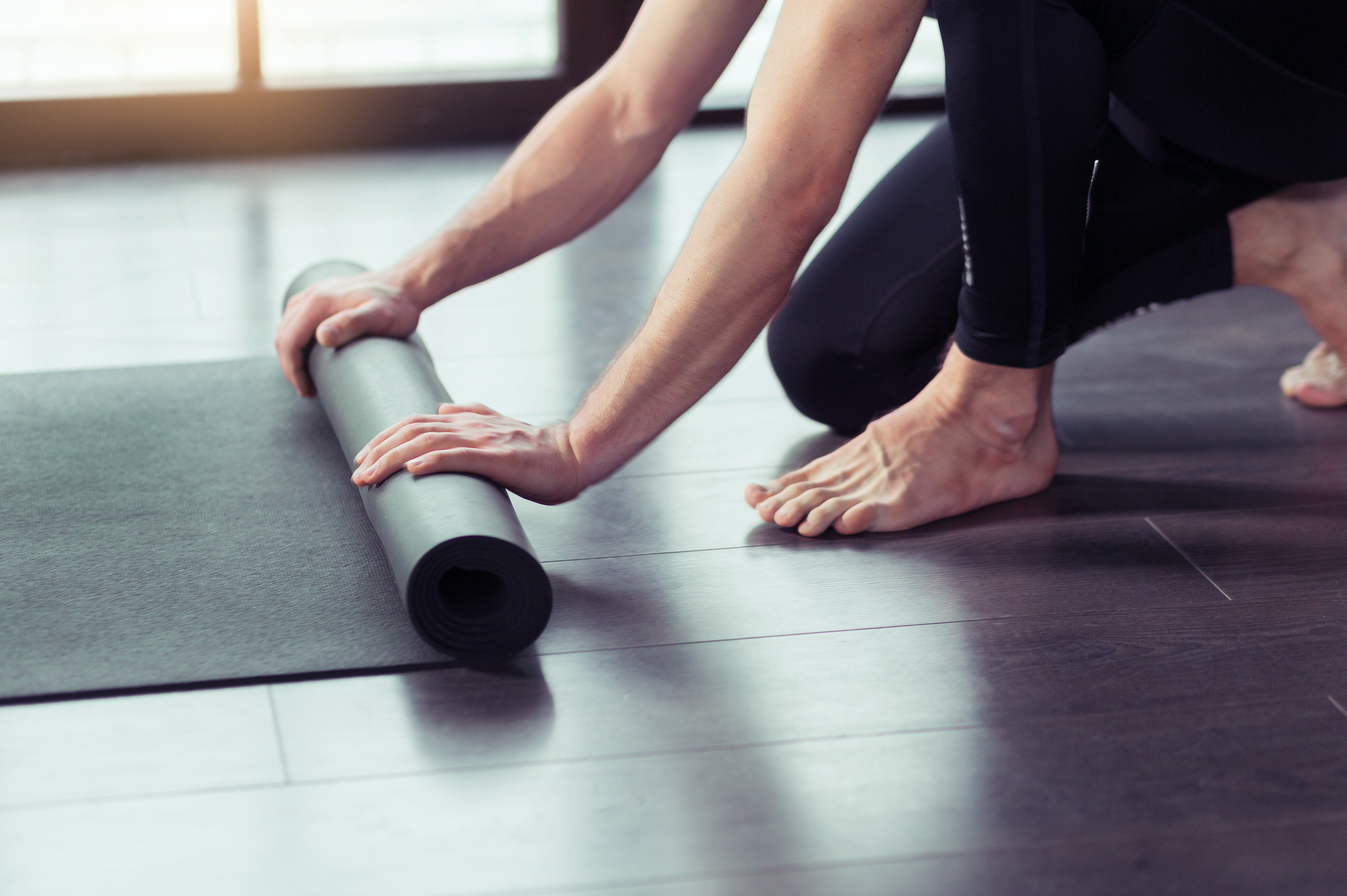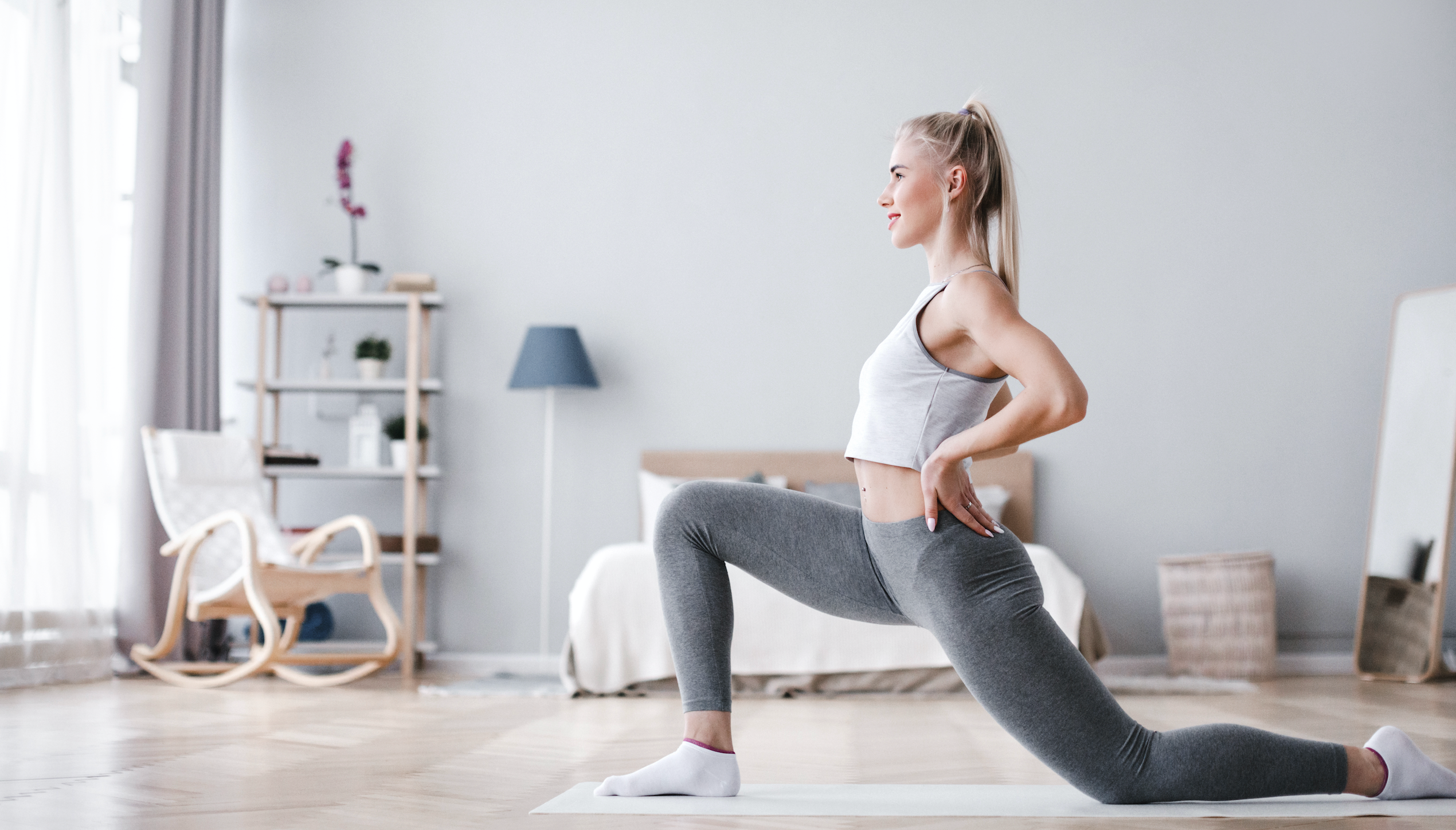Whether you tend to be a gym person or enjoy exercising outdoors, you may think that space is of utmost importance when it comes to the efficacy of a workout. But the reality is that memberships to spacious gyms or lavish studios can be expensive, and while space is certainly a luxury, it’s not a necessity. With the right setup, you can have a solid free workout without leaving your home (even if you live in a studio apartment).
Here’s how to create your own gym in your small apartment or studio — no pricey purchases or 1000-sq. ft. property required.

Step 1: Find your space
You don’t need limitless space for a morning workout, but you do need a little space. Most at-home workouts can be done in any space the size of a rolled-out yoga mat — a space that’s the length of your body and almost the width of your wingspan. If you can lie down on the floor and spread your arms out by your side without hitting a wall or something breakable, that space will do. It doesn’t matter where you set up shop, it just has to be somewhere that your body can fit and that you feel free to move and sweat in. That said, you should always put down some kind of mat wherever you plan to work out — smelly floors and carpets spare no souls, and yoga mats are easy to clean.

Step 2: Build an arsenal of bodyweight exercises
Many folks (including myself) were taught to think that a good workout has to include equipment. In reality, our body weight is one of the best tools we have at our disposal — and it’s free!
The key to creating an effective bodyweight workout is to choose a few different exercises that work the major muscle groups (think upper body, lower body and core). As a trainer, my go-to bodyweight strength exercises are squats, lunges, pushups, upright planks and windshield wipers, to name a few. If you’re looking for more of a HIIT-style workout, you can add in movements like mountain climbers, shoulder taps or burpees. Choose five to seven exercises to include in a set and repeat the set three to five times.

Step 3: If you do want equipment, choose wisely
Should you want to invest in some equipment, my best advice is to buy tools that are “timeless.” Sure, having weights at home is convenient, but they’re usually rather expensive. Plus, when we keep lifting the same weight, our muscles begin to adapt and, eventually, they feel light. If you’re determined to buy weights, you have two sensible options. You could get a set of six different weights (a set that has a lighter weight, a weight you’re comfortable with, and one that’s more difficult, so you have room to progress) or you could get one pair of weights that’s challenging for you, but manageable. Ideally you don’t want to put yourself in a situation where you’re buying heavier ones every few months and end up with a collection of weights you don’t even use.
Instead, I recommend putting your dollars towards less expensive, but still high-quality, pieces like resistance bands (for upper body, lower body or both), core sliders or exercise dice for those times when you need a little help building your workout. All of these tools can be used to do a number of movements, from bicep curls to lateral lunges. The best part? They’re a one-time investment. Core sliders and exercise dice have no limit on how many times you can use them, and resistance bands typically come in packs of three or more, so when the lightest becomes too easy, it’s easy to level up.
Bottom line: You don’t need a ton of space or big-ticket items to have a challenging, worthwhile workout. So, whether you live in a smaller space or just want a more cost-effective option, exercising at home is definitely something to consider. The risk is low, and the reward is endless.














